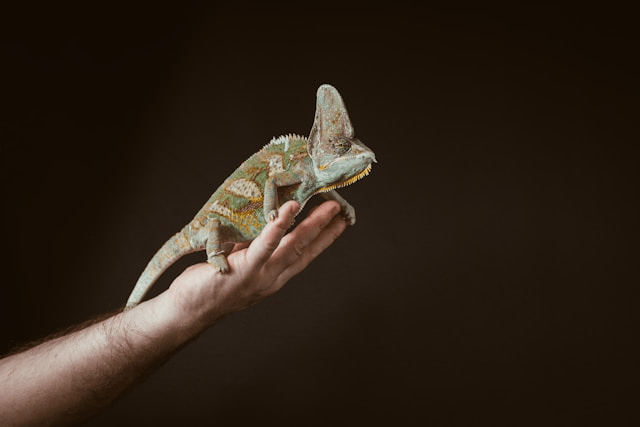Reptiles are becoming increasingly popular as pets, thanks to their fascinating behaviors, unique appearances, and relatively low-maintenance lifestyles. However, unlike traditional pets, reptiles require very specific environments to stay healthy and thrive. Creating the right habitat is not just about aesthetics it’s about replicating their natural surroundings to meet their biological and behavioral needs.
If you’re considering bringing a reptile into your home or are looking to improve your current setup, this guide will walk you through everything you need to know about reptile habitat setup.
Understand Your Reptile’s Natural Environment
The first step to building the perfect habitat is understanding where your reptile comes from in the wild. Whether you have a desert-dwelling bearded dragon, a rainforest-loving crested gecko, or a semi-aquatic turtle, mimicking their natural environment is essential.
Common Reptile Habitat Types:
-
Desert: Dry, warm climates with minimal humidity (e.g., leopard geckos, uromastyx)
-
Rainforest/Tropical: Warm with high humidity and dense foliage (e.g., chameleons, tree frogs)
-
Temperate forest: Moderate humidity and temperatures (e.g., corn snakes)
-
Aquatic/Semi-aquatic: Mix of land and water (e.g., red-eared sliders, some amphibians)
Each reptile species has different requirements, so before buying equipment or accessories, do thorough research on your specific pet. Reptile pet care starts with understanding their unique lifestyle needs.
Choosing the Right Enclosure
The enclosure is the foundation of your reptile’s habitat. A poor choice here can lead to stress, illness, or escape.
Enclosure Types:
-
Glass tanks/terrariums: Great for visibility and climate control; ideal for most reptiles
-
Plastic enclosures: Lightweight, easy to clean, good for temporary or quarantine setups
-
Wooden vivariums: Excellent heat retention but may struggle with high humidity
Sizing Guidelines:
-
Lizards: Need space to roam or climb depending on species
-
Snakes: Should have enough length to stretch out comfortably
-
Turtles: Require both land and water space, with enough room to swim
Think in terms of floor space, height (for climbers), and security (tight-fitting lids, escape-proof doors). When planning your reptile tank setup, always consider future growth baby reptiles grow quickly!
Heating, Lighting, and Humidity
Reptiles are ectothermic, meaning they rely on external sources of heat to regulate their body temperature. This makes heating and lighting a critical part of your reptile enclosure guide.
Heating:
-
Use heat lamps, ceramic emitters, or under-tank heaters depending on the species.
-
Create a temperature gradient with a warm side and a cooler side so your pet can thermoregulate.
-
Use digital thermometers to monitor both ends of the tank.
Lighting:
-
UVB lighting is essential for many species, especially those that need Vitamin D3 to metabolize calcium (e.g., turtles, bearded dragons).
-
Ensure your pet has a consistent day/night cycle, usually 12 hours on, 12 hours off.
Humidity:
-
Tropical species may require 60%–80% humidity; desert species need much less.
-
Maintain proper levels with misting, foggers, or humidifiers.
-
Use a hygrometer to keep track and adjust as needed.
Getting these elements right is one of the most important parts of how to care for a reptile.
Substrate and Decor
Substrate the material at the bottom of the enclosure plays a big role in both comfort and cleanliness.
Safe Substrate Options:
-
Reptile carpet: Easy to clean, reusable, and safe for most terrestrial reptiles
-
Coconut fiber or eco-earth: Great for humidity-loving species
-
Paper towels or newspaper: Ideal for young reptiles or quarantine tanks
Avoid These Substrates:
-
Loose sand (especially for young geckos or dragons) can cause impaction if ingested.
-
Gravel or wood chips may harbor mold or sharp edges.
Enrichment Decor:
-
Hides and shelters for resting and feeling secure
-
Branches and vines for climbing species
-
Rocks and basking platforms for warmth and stimulation
-
Live or fake plants to simulate a natural environment
Decorations also promote natural behaviors like climbing, burrowing, and basking.
Feeding and Hydration Stations
Your pet’s eating area should be clean, accessible, and aligned with its natural behavior.
Feeding Areas:
-
Use shallow, tip-resistant dishes
-
Hand-feed or tong-feed when appropriate (especially with snakes or picky eaters)
-
Remove uneaten food to avoid spoilage or attracting pests
Water Sources:
-
Shallow water dishes are suitable for most reptiles
-
Drip systems or misting for chameleons and other tropical species that don’t drink standing water
-
Keep the water clean and fresh at all times
Proper hydration is a key part of reptile pet care, especially in warm environments.
Cleaning and Maintenance
Maintaining a clean habitat ensures your reptile stays healthy and comfortable.
Cleaning Tips:
-
Spot clean daily: Remove waste, shed skin, and uneaten food
-
Deep clean weekly or biweekly: Replace substrate, disinfect decor and glass
-
Use reptile-safe cleaners or a mix of vinegar and water
Watch for signs of mold, mites, or bacterial growth. A dirty habitat can lead to respiratory issues, infections, or parasites.
Final Tips for a Healthy, Happy Reptile
Creating the perfect reptile habitat goes beyond just setup it’s about ongoing care and observation.
Additional Tips:
-
Quarantine new reptiles for at least 30 days in a separate enclosure
-
Monitor temperature and humidity levels daily
-
Take your reptile to a reptile-savvy vet for regular checkups
-
Join online forums or groups for your specific species
-
Stay informed husbandry guidelines evolve with new research
Avoid common mistakes like housing incompatible species together, using the wrong lighting, or neglecting humidity needs.
Conclusion
Creating the perfect habitat for your reptile pet requires thought, planning, and attention to detail but the rewards are well worth it. A well-designed environment helps ensure your pet lives a long, active, and healthy life.
Whether you’re new to reptiles or looking to upgrade your current setup, following the steps in this guide will set you on the right path. From selecting the right enclosure to mastering humidity and lighting, the key is always to mimic nature and stay observant.









